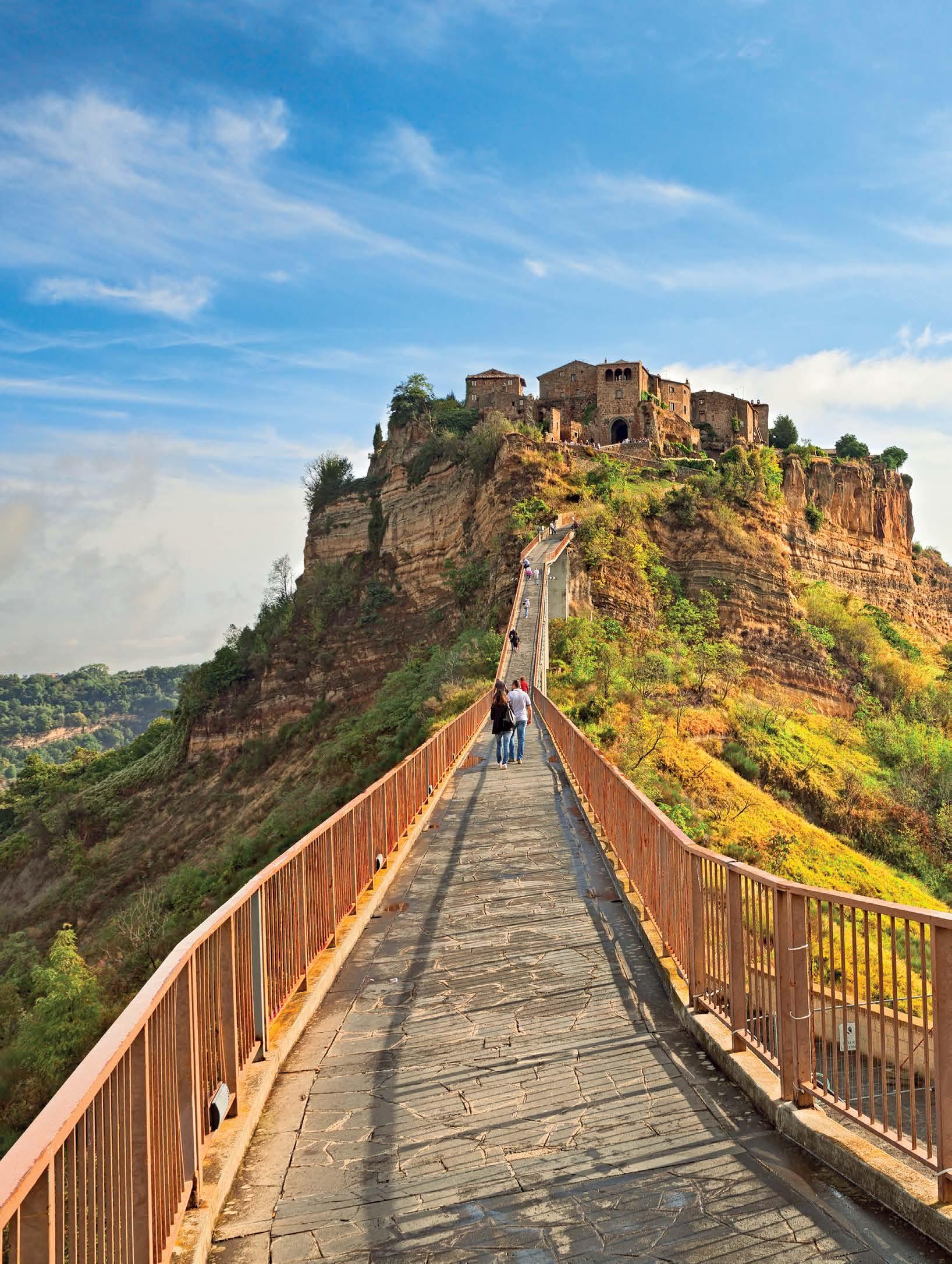
12 minute read
MAMMA MIA: O LADO B DA ITÁLIA É FABULOSO
Civita de Bagnoregio, Viterbo: só uma das pérolas pouco conhecidas no interior da Itália
// Civita of Bagnoregio, Viterbo: only one of the pearls little known in the interior of Italy
Advertisement
MAMMA MIA: ITALY’S B-SIDE IS FABULOUS
Fuja do roteiro tradicional e descubra os segredos de uma Itália menos conhecida e menos repleta de turistas do que Roma ou a Costa Amalftana – mas tão espetacular quanto elas Escape from the traditional itinerary and discover the secrets of a lesser-known Italy with less tourists than Rome or the Amalf Coast – but just as spectacular
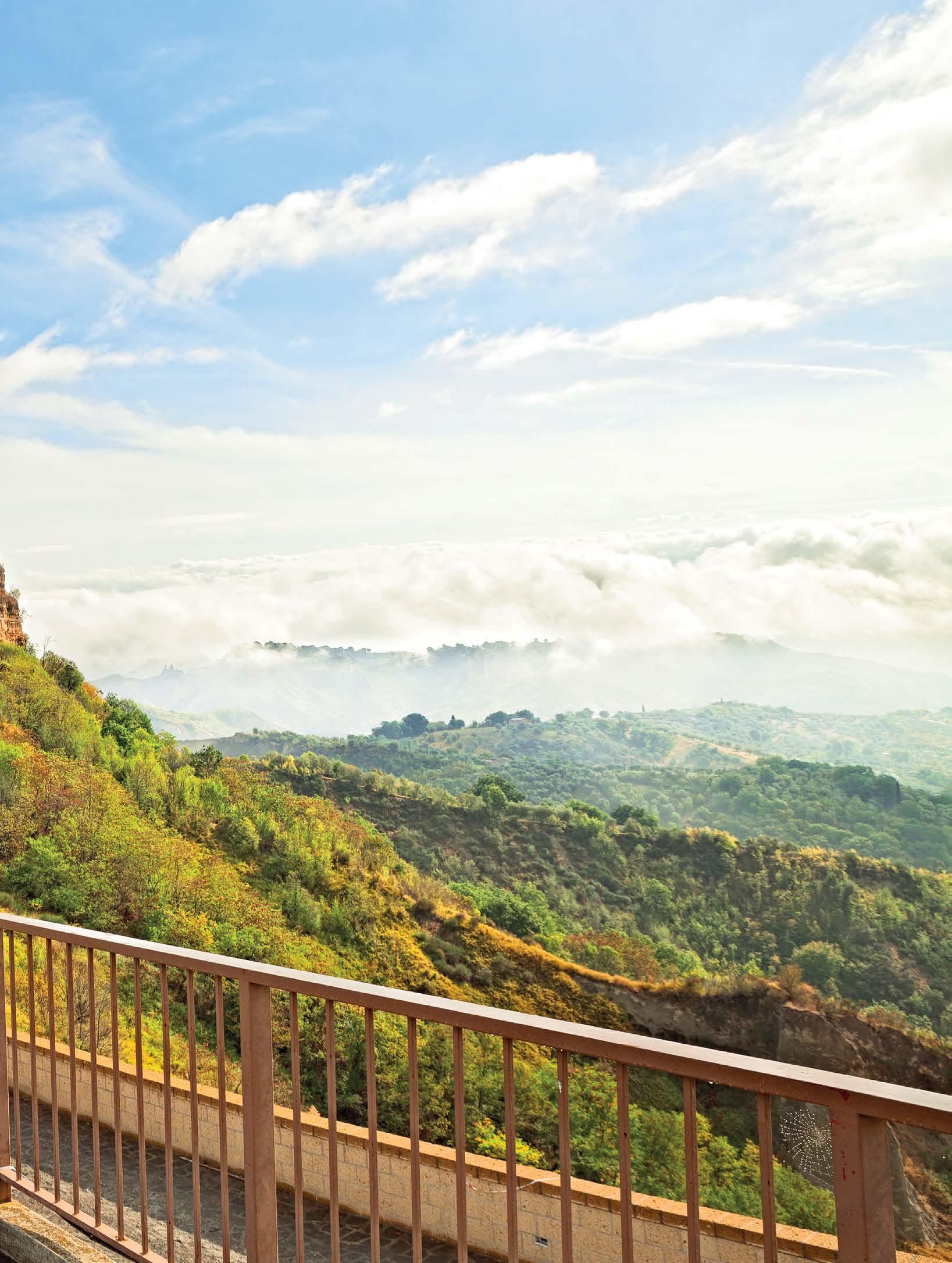
por/by Edison Veiga
ualquer viajante que se preze tem que visitar o Coliseu, jogar uma moedinha na disputadíssima Fontana di Trevi e se embasbacar sob o teto da Capela Sistina. Mas há uma Itália pouco conhecida (e menos saturada por milhões de turistas como em Roma) que merece ser visitada. Se a sua viagem tem uns dias a mais, se as férias são um repeteco no Mediterrâneo ou se você gosta de !- gir do óbvio, conheça o fabuloso lado B italiano.
Comecemos por Roma. Se todos os caminhos levam até lá, a saída é pela estação ferroviária San Pietro, próxima do Vaticano. Por 5,60 euros, o trem percorre cerca de 80 km para chegar a Viterbo, repleta de ruas medievais, águas termais e uma rica história. Entre os católicos, a cidadezinha de 68 mil habitantes é famosa por ter sido a terra de Santa Rosa –mumificada, ela está exposta em uma capela anexa à igreja que leva seu nome.
Viterbo vem do latim Vetus Urbs ou Cidade Velha. Seu centro histórico é um dos maiores e mais bem-preservados bairros medievais de toda a Europa, o que, por si só, já vale a viagem por entre muralhas históricas. No bairro San Pellegrino, as pedras vão do chão ao teto das casas, cobrindo ruas, pórticos e arcos, nos transportando diretamente para o passado.
A cidadela !ndada por etruscos foi fortificada em 773 e viveu seu auge no século 13. Quando a tensão com o império aumentou, os pontí- A Villa Lante em Bagnaia, perto de Viterbo, possui jardins maneiristas do século 16 // The Villa Lante in Bagnaia, near Viterbo, has Mannerist gardens from the 16th century
Localizada a cerca de uma hora de Roma e sem um exército de turistas,
Viterbo exibe uma arquitetura conservada e espetacular // Located about an hour from Rome and without an army of tourists, Viterbo displays a preserved and spectacular architecture
Q
No bairro medieval de San Pellegrino, em Viterbo, pedras seculares cobrem paredes e pórticos
// In the medieval San Pellegrino, in
Viterbo, secular stones cover walls and porticoes
No bairro medieval de San Pellegrino, em Viterbo, as pedras vão do chão ao teto das casas, cobrindo ruas, pórticos e arcos, nos transportando diretamente para o passado
// In the neighborhood of San Pellegrino, in Viterbo, the stones climb from the ground all the way to the ceiling of houses, covering streets, gantries and arcs and transporting us directly to the past.
// Any self-respecting traveler has to visit the Coliseum, throw a coin in popular Fontana di Trevi and become staggered under the ceiling of the Sistine Chapel. However, there is a lesser-known Italy (and not as saturated by millions of tourists as Rome) that deserves the visit. If you are traveling for a few days longer than the standard time, if your vacations are the same old Mediterranean tour or if you like to escape from the obvious, it is time to get acquainted with Italy’s fabulous B-Side.
Let us start in Rome. If all roads lead to the ci%, the exit is by San Pietro railway station, near the Vatican. For € 5.60, the train runs for 50 miles before arriving at a Viterbo filled with medieval streets, thermal waters and a rich history. Among Catholics, the ci% of 68 thousand inhabitants is famous for being the birthplace of Saint Rose. Mummified, she is exhibited in a chapel near the church named a$er her.
Viterbo comes from the Latin Vetus Urbs, or Old Ci%. Its historical center is one of the biggest and best-preserved medie
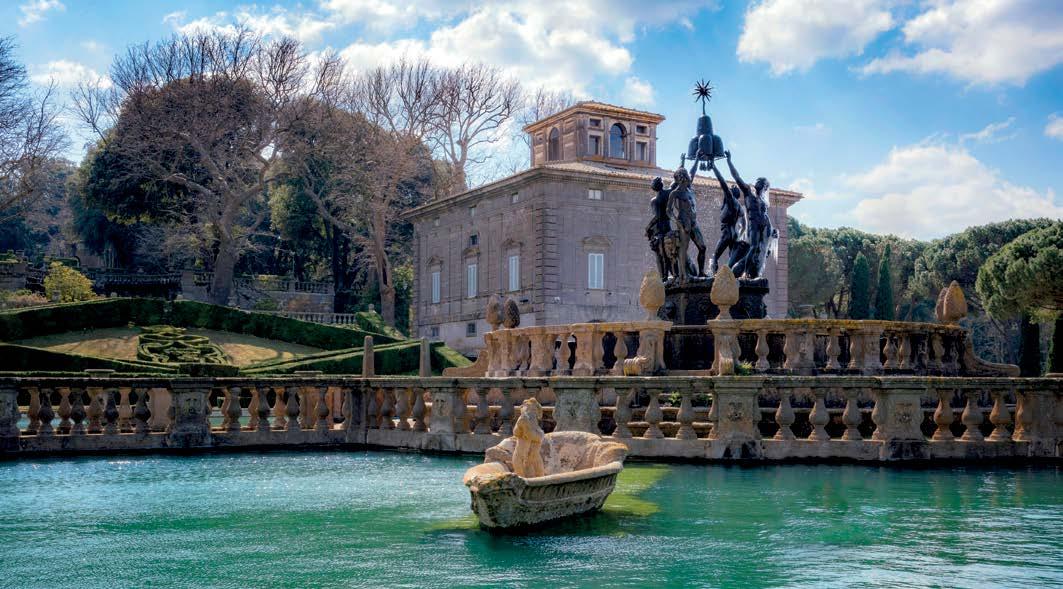

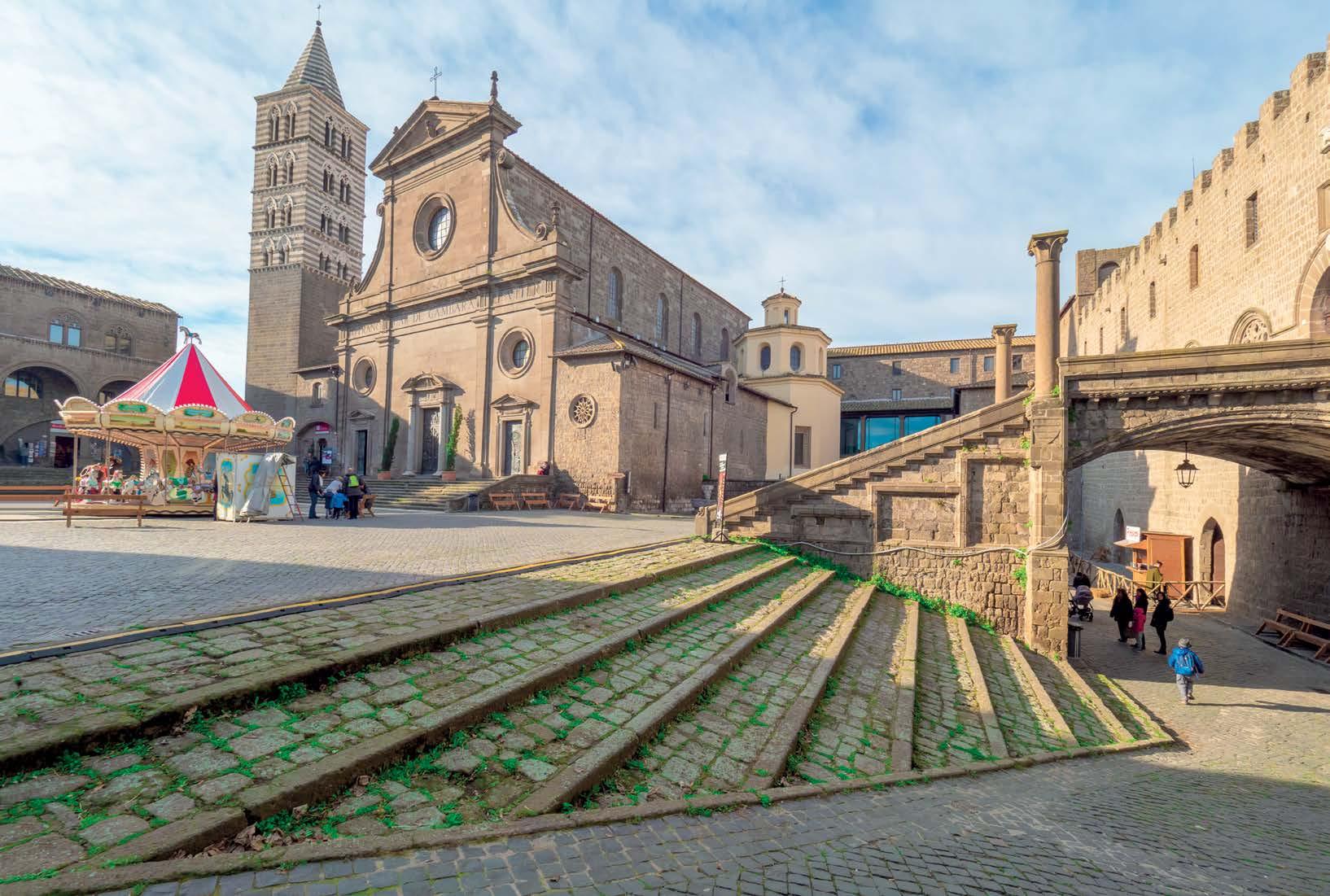
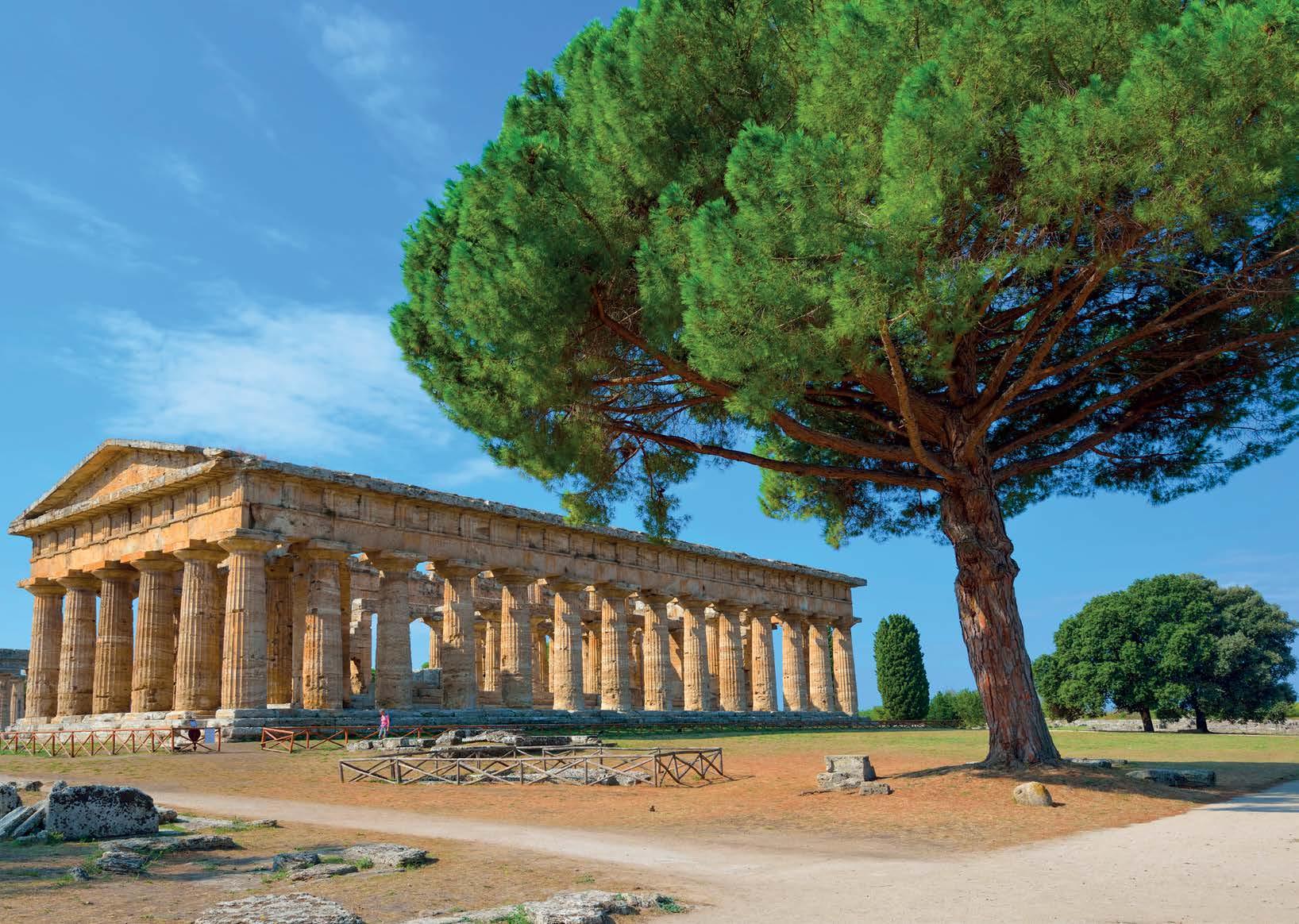
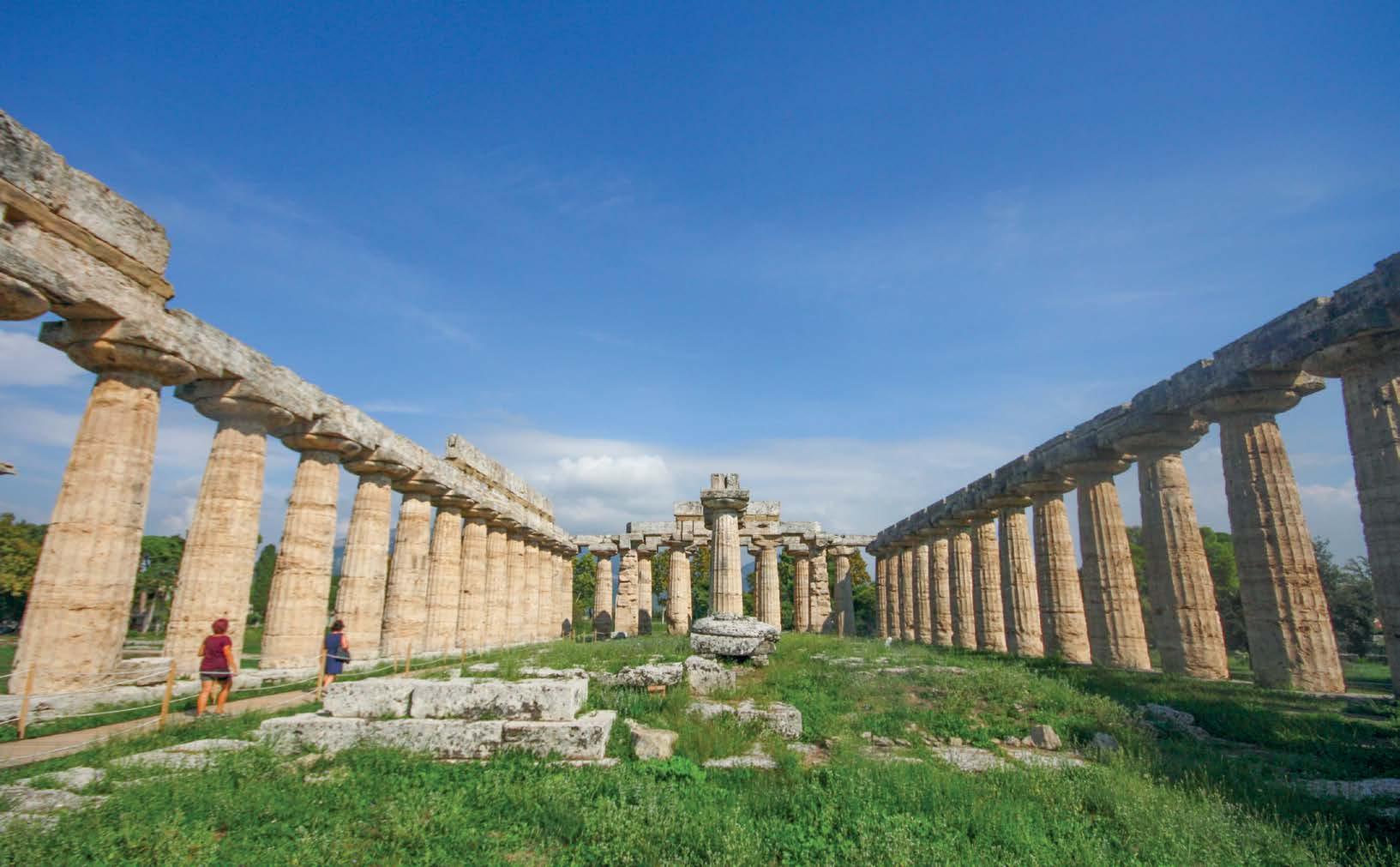
Chegar a Paestum é ir para a Grécia sem sair da Itália. Fundada em 600 a.C., ela é considerada a cidade da Grécia Antiga mais bemconservada do mundo
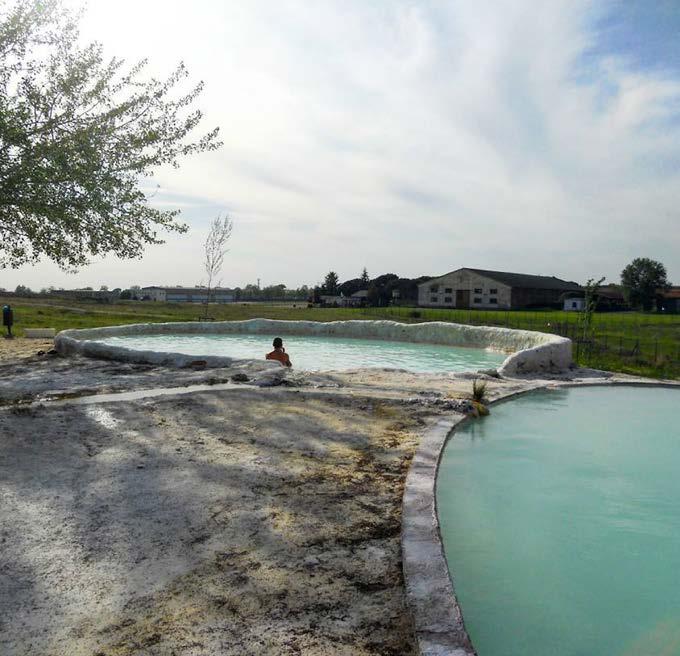
// Visiting Paestum is like going to Greece without leaving Italy. Founded in 600 B.C., it is considered the best-conserved Ancient Greek city in the world.
fices abandonaram Roma e se mudaram para Viterbo por questões de segurança e autonomia. De 1254 a 1281, ela foi a sede principal da Igreja Católica, trazendo mais riqueza e prosperidade para a cidade.
O Palácio dos Papas, em estilo medieval, foi ocupado por oito sumos pontífices e é um ponto turístico essencial. Lá surgiu o termo “conclave”, que designa o encontro de cardeais para eleger um novo papa. De 1268 a 1271, na eleição mais longa da igreja, o resultado só saiu após todos os cardeais serem fechados à chave e com alimentação racionada. A tática deu certo: Gregório X foi eleito e, hoje, é possível conhecer a sala do fatídico acontecimento.
Passear por Viterbo, com edificações pitorescas como a Catedral de San Lorenzo, nos faz imaginar como era a vida na Idade Média. E, além disso, a cidade possui uma característica geográfica prazerosa: ela abriga diversas termas naturais com arquitetura preservada. Entre as mais famosas está a fonte de Bullicame, com águas terapêuticas a 58°. Após caminhar por tantas ruelas medievais, um banho termal bem ao estilo dos romanos vai bem.
CONEXÃO ITÁLIA-GRÉCIA
Outra preciosidade italiana pouco conhecida é Paestum, !ndada em 600 a.C. e considerada a cidade da Grécia Antiga mais bem-conservada do mundo. Se a Costa Amalfitana está no seu roteiro, reserve um dia para Paestum. Um bate-volta de Salerno é facílimo: são apenas 30 km de distância e é possível ir de trem. Da popular Nápoles a viagem também é sobre trilhos, dura apenas uma hora e meia e compensa qualquer esforço.
Chegar a Paestum é ir para a Grécia sem sair da Itália. E, por incrível que pareça, o sítio arqueológico italiano deixa até Atenas para trás: além das ruínas bem-conservadas com mais de 2,5 mil anos, não é preciso disputar espaço com uma multidão de turistas. São quatro grandes templos – dois dedicados a Hera, a rainha do Olimpo; um a Atena, a deusa da sabedoria, e outro a Poseidon, o deus dos mares.
Além de circular pelos templos e contemplar a imponente arquitetura grega, é possível visitar tumbas,
val boroughs in all of Europe, which by itself is worth the trip to its historical walls. In the neighborhood of San Pellegrino, the stones climb from the ground all the way to the ceiling of houses, covering streets, gantries and arcs and transporting us directly to the past. !e ci%, founded by the Etruscans, gained fortifications in 773 and lived its apogee in the 13th century. When the tension with the empire became stronger, the pontiffs abandoned Rome and moved to Viterbo for questions of security and autonomy. From 1254 to 1281, it was the main headquarters of the Catholic Church, bringing more riches and prosperi% to the ci%. !e Palace of the Popes, in medieval s%le, was occupied by eight Supreme Pontiffs and is an essential tourist attraction. It was there that the term “conclave” was created to designate the meeting of cardinals to elect a new Pope. From 1268 to 1271, in the Church’s longest election, the result only came out a$er the cardinals were locked in the room with restricted feeding. !e tactic paid off: Gregory X was elected and, currently, one is able to see the room where the ominous happening took place.
Strolling around Viterbo, with picturesque buildings like San Lorenzo Cathedral, makes us imagine what life was like in the Middle Ages. Besides, the ci% has a very pleasing geographic characteristic: it houses a series of natural thermal baths with preserved architecture. Among the most famous is the fountain of Bullicame, with 58°C therapeutic waters. A$er walking through so many medieval alleys, a Roman s%le thermal bath is a good option.
Templo de Netuno, em Paestum, uma das edifcações gregas mais conservadas do planeta
// Temple of Neptune in Paestum, one of the most preserved Greek buildings on the planet
Paestum foi fundada em 600 a.C. e possui ruínas e templos que nos transportam para a Grécia Antiga
// Paestum was founded in 600 BC and has ruins and temples that transport us to ancient
Termas de Bullicame, em Viterbo: relaxe nas águas terapêuticas de até 58º
// Thermal waters of Bullicame, in Viterbo: relax in therapeutic waters of up to 58º

Imagem encontrada no interior de um túmulo em Paestum: mergulho para o infnito
// Image found inside a tomb in Paestum: diving into infnity
Saiba mais: / More information:
Visite Viterbo / Visit Viterbo
visit.viterbo.it
Sítio Arqueológico e
Museu de Paestum / Archeological Site and
Museum of Paestum
museopaestum.beniculturali.it
muralhas, ruínas de um fórum romano e de antigas residências. Um pequeno museu em frente ao sítio arqueológico também vale a visita. O ingresso para museu e ruínas custa apenas 9,50 euros.
Ali estão pinturas do período grego e itens encontrados em escavações, como vasos, pedras lapidadas e outros objetos milenares. A pintura mais famosa, e que se tornou um símbolo local, traz um homem saltando para um mergulho. O mistério: a imagem foi gravada na parte de dentro de um túmulo e até hoje não se sabe o que ela representa.
Como se todo esse valor histórico não bastasse, Paestum ainda é um destino procurado pelas belas praias no mar Tirreno, que, diferentemente das icônicas praias da Costa Amalfitana, são de areia finíssima – e não de pedrinhas. Descalços, seus pés agradecem o desvio no roteiro turístico mais tradicional.
Originalmente batizada Posidônia, em tributo a Poseidon, Paestum teve grande importância na Grécia Antiga e também !ncionou normalmente durante o auge do Império Romano. Mas com o início da Idade Média, no século 5, a cidade entrou em declínio e foi abandonada – o que explica o grau de preservação de seus templos.
Foi só no século 18 que as ruínas de Paestum foram encontradas, e ainda há muito o que descobrir. Dos cerca de 120 hectares do sítio arqueológico local, apenas 25 hectares foram escavados. O que nos faz acreditar que o subsolo de Paestum seja como a Itália: guarde muitas surpresas incríveis para !turos viajantes.
THE ITALIAN-GREEK CONNECTION Another li#le-known Italian gem is Paestum, founded in 600 B.C. and considered the best-conserved Ancient Greek ci% in the world. If the Amalfi Coast is in your itinerary, reserve a day for Paestum. A quick one-day trip from Salerno is a synch: the distance of about 20 miles can be covered by train. From popular Naples, the trip can also be made by rail, takes about 90 minutes and is worth any effort you may have to make.
Visiting Paestum is like going to Greece without leaving Italy. Moreover, as incredible as it may seem, the Italian archeological site leaves Athens in the dust: besides the well-preserved 2.5-thousand year ruins, you do not have to rub elbows with a crowd of tourists. !ere are four great temples – two dedicated to Hera, the queen of Olympus, one to Athena, the goddess of wisdom and the other to Poseidon, lord of the seas.
Apart from making the temple rounds and contemplating the imposing Greek architecture, there are tombs, walls, ruins of a Roman forum and ancient residences to be visited. A small museum facing the archeological site is also worth the trip. !e ticket to the museum and ruins costs a measly € 9.50. !ere, visitors will find paintings from the Greek period and items discovered in diggings like vases, polished stones and other ancient objects. !e most famous painting, which has become a symbol of the place, shows a man diving. !e mystery: the image was engraved in the inner part of a tomb and nobody knows, until this day, what it represents.
As if all this historical value were not enough, Paestum is a destination also sought for the beauti- (l beaches in the Tyrrhenian Sea, that, unlike the iconic beaches of the Amalfi Coast, it is made of fine sand instead of pebbles. Your bare feet will appreciate the detour in the more traditional itinerary.
Originally named Poseidonia, – in a tribute to Poseidon, - Paestum was very important in the time of Ancient Greece and also (nctioned regularly during the heyday of the Roman Empire. However, with the advent of the Middle Ages, in the 5th century, the ci% entered a period of decline and was abandoned, something that helps to account for the preservation of its temples.
It was only in the 18th century that the ruins of Paestum were discovered, and there is still a lot more to find out. From the roughly 120 hectares of the local archeological site, only 25 were excavated. !at makes us believe that Paestum’s underground is not so different from Italy: it guards many incredible surprises for (ture travelers.

EXPLORE MAIS DO LADO B ITALIANO:
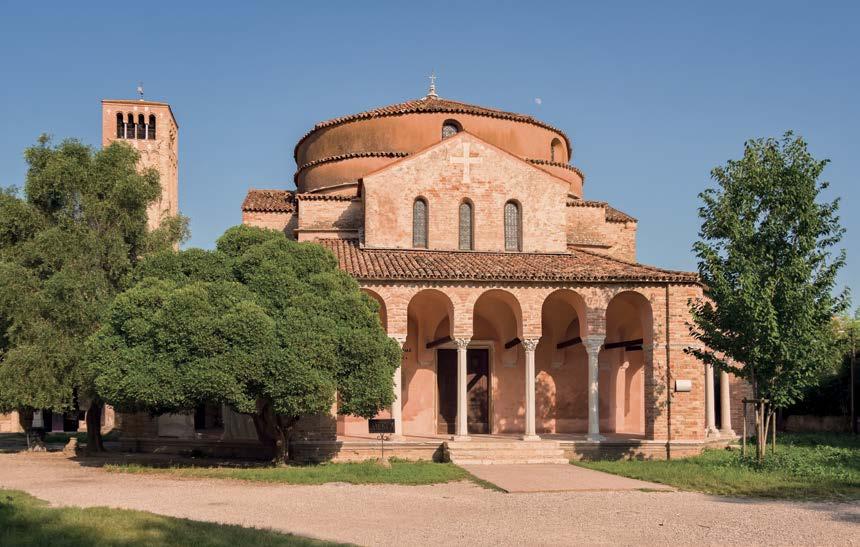
Levico Terme: A charmosa cidadezinha próxima a Trento encanta pelo lago, pelas águas termais e pelo bem-arrumado estilo que remete à dominação austríaca. Ilha de Torcello: Menos saturada do que Murano e Burano, a ilha no arquipélago de Veneza – e que era a favorita de Hemingway – tem uma catedral do século 7 e bons restaurantes. Fiesole: Localizada a menos de 10 km de Florença, a cidade de apenas 15 mil habitantes possui um sítio arqueológico com ruínas anteriores à ocupação romana. Monza: Conhecida pelo autódromo internacional, a cidade próxima a Milão conta com um belo e gigantesco parque que vale a viagem.
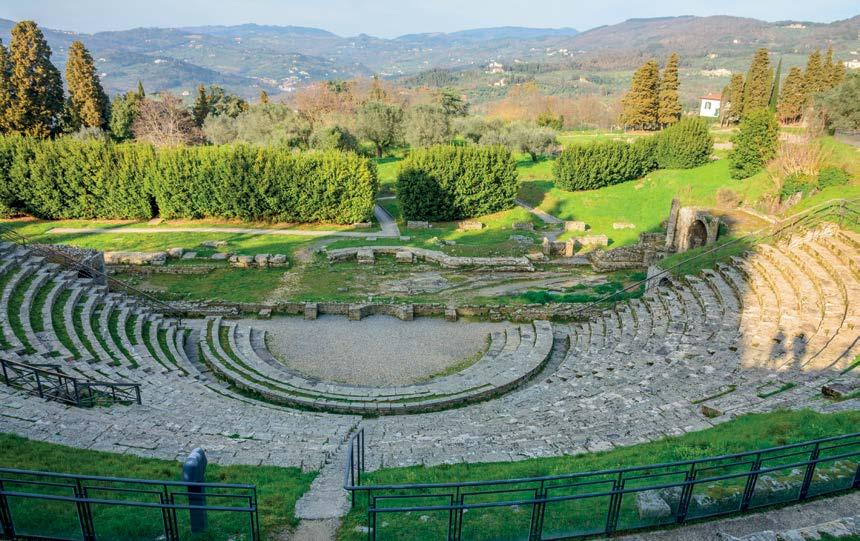
EXPLORE MORE OF ITALY’S B-SIDE:
Levico Terme: The charming village near Trento enchants us with its lake and thermal waters and for the well-arranged style that beckons to the Austrian domination.
Torcello Island: Less saturated than Murano and Burano, the isle in the Venetian archipelago – which was Hemingway’s favorite – has a cathedral dating back to the 7th century as well as some good restaurants.
Fiesole: Located about 6 miles from Florence, the city of only 15 thousand inhabitants has an archeological site with ruins anteceding the Roman occupation.

Monza: Renowned for its international racing course, the city near Milan has a big and beautiful park that is well worth the trip.




